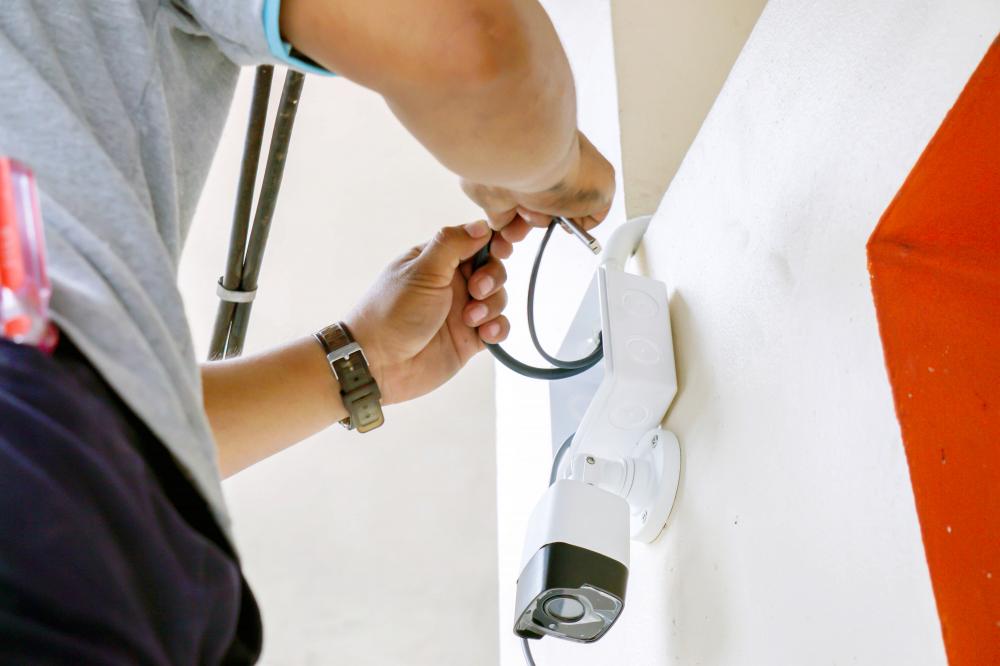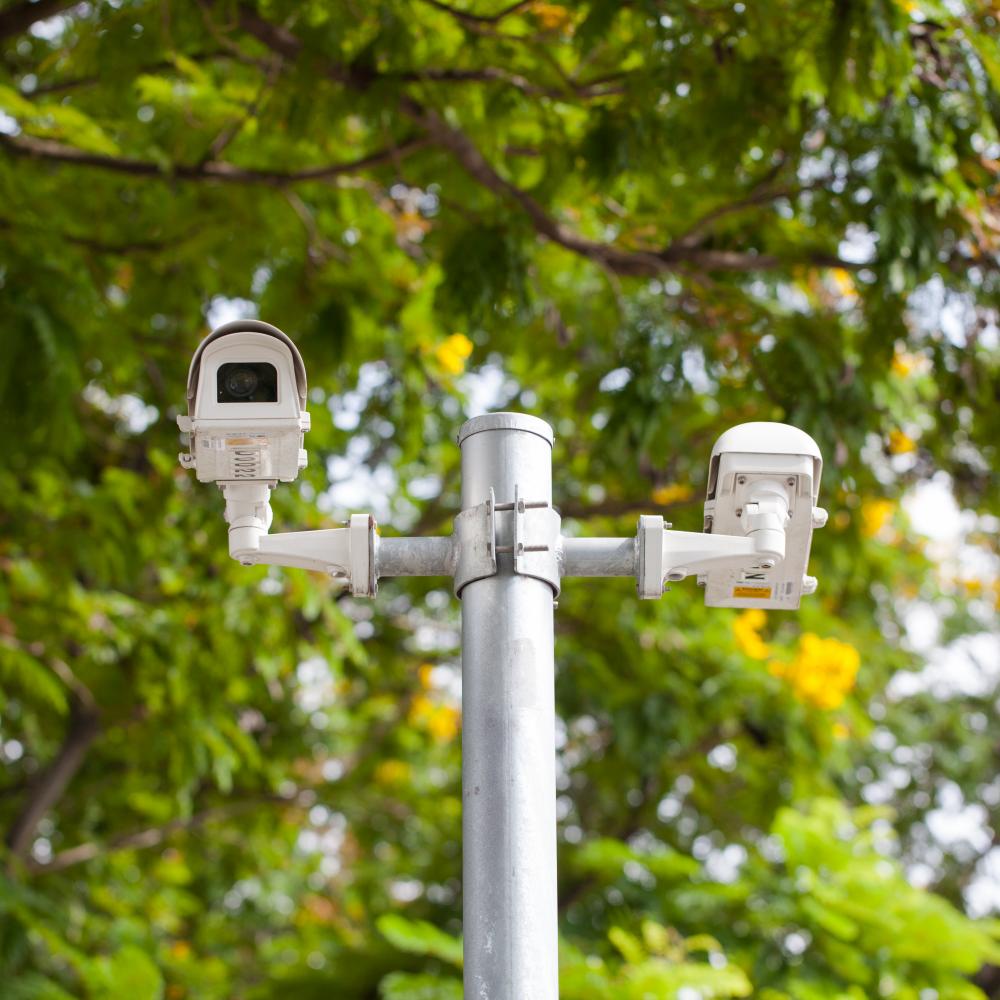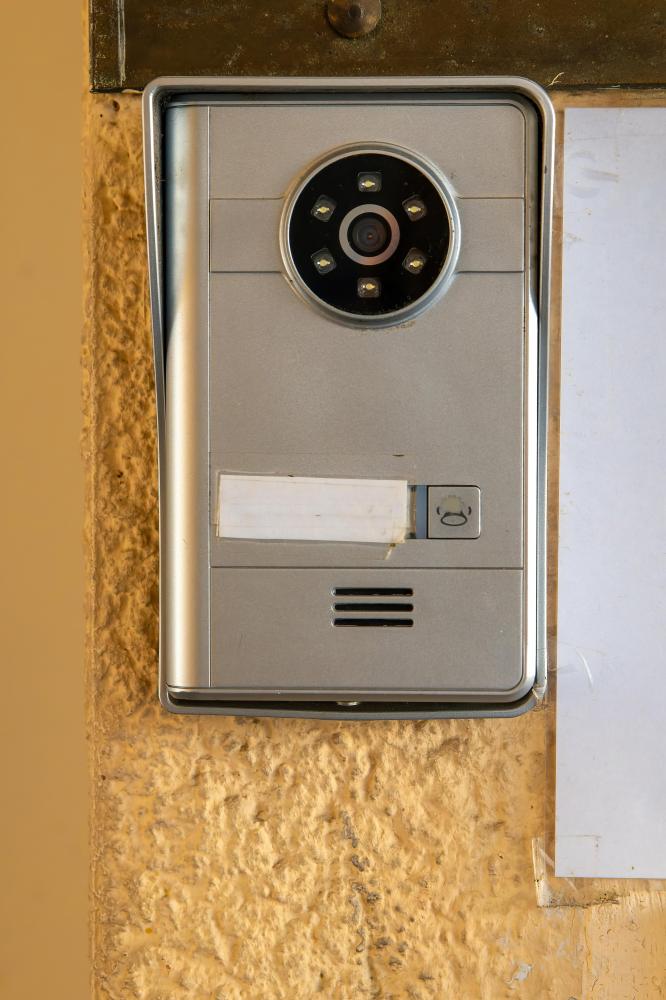Table of Contents

Understanding Secure Wired Camera Setup
At PRIMA by ARMGUARD, we’re dedicated to ensuring that your home or business security system is robust, reliable, and tailored to meet your needs. A Secure Wired Camera Setup is fundamental to achieving this, offering unparalleled reliability and constant surveillance without the worry of signal interruption common in wireless systems. Through our expertise, we aim to demystify the process, helping you understand the vital components and the installation steps that ensure a secure and efficient setup.
Planning Your Setup
Every Secure Wired Camera Setup starts with meticulous planning. It’s crucial to evaluate the specific requirements of your premises to determine the most strategic locations for camera placement. This phase involves considering potential entry points, critical areas requiring constant surveillance, and ensuring there’s minimal blind spots. Remember, the effectiveness of your security system is heavily reliant on the strategic positioning of cameras. This preliminary planning can significantly streamline the installation process, ensuring comprehensive coverage of your property.
Tools and Materials Needed
Equipping yourself with the right tools and materials is the next pivotal step. For a Secure Wired Camera Setup, you’ll need high-quality ethernet cables, power drills with appropriate bits for different surfaces, masking tape for secure routing, steel fish tape for pulling cables through confined spaces, and, of course, the security cameras and DVR (Digital Video Recorder) system. Selecting high-quality components can significantly impact the longevity and effectiveness of your security system.
- Ethernet cables
- Power drill and bits
- Masking and electrical tape
- Steel fish tape
- Security cameras and DVR system
Installation Process
Initial Preparation
Before drilling any holes or running cables, it’s imperative to conduct a thorough walk-through of your site. This walkthrough helps in visualizing the cable routes and identifying any potential challenges that may arise during the installation. Ensuring you have a clear path for each cable not only makes the installation smoother but also prevents any unnecessary modifications to your property.
Running the Cables
One of the most labor-intensive aspects of a Secure Wired Camera Setup is running the cables from each camera back to the DVR. This process requires patience and precision, especially when drilling through walls or threading cables through tight spaces. Utilizing steel fish tape can ease this process, allowing you to pull cables over long distances or through confined areas with less effort. Special attention should be paid to avoid electrical wiring during this process to prevent interference and potential safety hazards.
When running cables, it’s also important to label each one according to its corresponding camera. This simple step can save considerable time and confusion when connecting cables to the DVR.
Finalizing the Setup
After successfully running the cables, the next steps involve connecting them to the cameras and DVR, and then powering up the system. This phase is critical, as proper connections are essential for a fully operational system. It’s also an excellent time to organize cables neatly, using ties or clips, which can help in maintenance or any future expansions of your system. The initial power-up is a thrilling moment, as you see your Secure Wired Camera Setup come to life, offering real-time surveillance of your property.
Configuring the DVR is the final step in the installation process. This involves setting up recording schedules, adjusting camera settings, and ensuring remote viewing capabilities are functioning correctly. This setup phase allows for customization according to specific security needs, whether it’s continuous recording or motion-triggered alerts.
Post-Installation Tips
With your Secure Wired Camera Setup up and running, periodic maintenance checks are essential to ensure its long-term reliability. Regularly cleaning camera lenses, checking for cable wear and tear, and updating DVR software can keep your security system functioning optimally. Additionally, revisiting your camera angles and recordings can help in fine-tuning your coverage, ensuring all critical areas remain within view.
Incorporating a Secure Wired Camera Setup into your security strategy is a wise choice for enhanced reliability and peace of mind. At PRIMA by ARMGUARD, we understand the importance of keeping your premises safe and secure. Through our detailed guides and dedicated support, we’re here to assist you in every step of the process, from planning to post-installation maintenance. Remember, a well-planned and carefully installed wired camera system is your first line of defense in protecting what matters most.

The Enduring Value of a Hardwired Security System
When it comes to safeguarding what’s dear, a hardwired security system stands as a bulwark of reliability and uninterrupted surveillance. PRIMA by ARMGUARD, rooted in a tradition of technological excellence, underscores the intrinsic benefits of these systems. Hardwired security systems eliminate worries about the battery life of components or the signal reliability issues that can plague wireless alternatives. The steadfast nature of a hardwired system ensures that your property is constantly monitored, without the gaps or downtime that could jeopardize your security.
From a professional standpoint, hardwired systems are synonymous with durability. These systems are hardwired into your home’s electrical system, making them less susceptible to hacking and providing a level of security that is rigorously dependable. Moreover, the fact that these systems are permanently installed means they’re a solid investment in your property’s value and security infrastructure.
Incorporating personal insights, the journey of installing a hardwired system can be an enlightening process. There’s a certain peace of mind in knowing that your system is as steadfast as your dedication to protecting your home. As someone deeply immersed in the nuances of smart security, I’ve seen firsthand how a hardwired security system can serve as the backbone of a comprehensive security strategy, offering unmatched reliability when it’s most needed.
Selecting the Perfect Hardwired Security System
Deciding on the right hardwired security system is a balance of assessing one’s needs and understanding the variety of features available. At PRIMA by ARMGUARD, we categorize systems not just by their technological features but by how they align with our clients’ lifestyles. For instance, the need for high-resolution video, perimeter alarms, or advanced motion detection varies greatly depending on the property’s size and the owner’s lifestyle.
The evolution of these systems has brought forward features such as smart home integration, allowing for seamless control of the system alongside other home automation elements. This integration has transformed the way we interact with our security systems, making them not just guardians but integral parts of our daily lives.
An often-overlooked aspect is the system’s expandability. Investing in a hardwired security system that can grow with your changing needs is crucial. Whether it’s adding more cameras, integrating advanced sensors, or expanding to new areas of your property, flexibility is key. This foresight in planning can save substantial time and resources in the long term.
Reflecting on my journey with PRIMA by ARMGUARD, what’s become evident is the unique connection people feel towards their security systems. A hardwired system, with its permanence and reliability, often becomes a silent but steadfast member of the household, offering a constant sense of security and peace.
Practical Installation Insights
Embarking on the installation of a hardwired security system can be a daunting task. However, with PRIMA by ARMGUARD’s DIY “Systems in a Box” kits, the process is significantly demystified. These kits come equipped with everything you need to set up your system, supported by easy-to-follow tutorials that ensure a smooth installation process.
One key piece of advice for those considering a DIY installation is to plan meticulously. Mapping out where each component will be placed before drilling any holes or running any wires can save a significant amount of time and potential rework. Additionally, understanding the limitations and requirements of your system can help in planning the best routes for wiring and positioning cameras for optimal coverage.
For those who prefer professional installation, PRIMA by ARMGUARD’s network of independent dealers offers expert services. These professionals can provide valuable insights into the unique security needs of your property and recommend customized solutions that a DIY approach might not uncover.
In my experience, the blend of professional advice and personal involvement in the installation process creates a deep connection to the system. It’s not just a piece of technology but a testament to your commitment to safeguarding your environment. This hands-on approach enriches the understanding and appreciation of the hardwired security system, elevating it from a mere tool to an integral part of your home’s defense mechanism.
Understanding Wired Alarm Integration
In the realm of smart security systems, Wired Alarm Integration stands as a critical step towards enhancing the safety and functionality of existing alarm setups. At PRIMA by ARMGUARD, we’ve observed firsthand how integrating traditional wired alarms with modern smart home ecosystems can significantly elevate a user’s control and awareness over their property’s security. Wired Alarm Integration isn’t merely about maintaining older systems; it’s about infusing them with new life and capabilities.
One of the most compelling attributes of Wired Alarm Integration is its ability to connect dated, yet fully functional, alarm sensors and systems to contemporary smart home platforms. This fusion enables users to receive real-time alerts on their smart devices, monitor their home or business with vastly improved convenience, and even automate responses to security events–all without the need to replace their existing hardware entirely.
Our experiences with Wired Alarm Integration have revealed a variety of configurations and adaptations, making it a flexible solution adaptable to numerous scenarios. Whether it’s integrating door and window contacts, motion sensors, or more sophisticated smoke and carbon monoxide detectors, the potential to enhance and expand is nearly limitless. This versatility is particularly beneficial for properties equipped with extensive wired systems, offering a cost-effective path to modernization.
Practical Benefits of Integration
The tangible advantages of Wired Alarm Integration extend beyond mere convenience. By incorporating existing wired systems into modern smart platforms, users can achieve a seamless security ecosystem that’s both efficient and robust. This synergy not only streamlines monitoring and control but also introduces an array of automation possibilities that were previously unattainable with standalone wired systems.
Here are several key benefits:
- Enhanced Accessibility: Remote access to the alarm system via smartphones or tablets allows users to stay connected with their property, irrespective of their location.
- Cost Savings: Utilizing existing wiring and sensors reduces the need for purchasing entirely new security systems, offering a budget-friendly upgrade path.
- Custom Automation: Integration opens the door to creating custom routines–like turning on lights upon triggering a motion sensor, further enhancing home security and convenience.
- Increased Property Value: Upgrading to a smart security system can be a selling point, potentially increasing the property’s market value.
From personal experience, a notable case involved a client who was initially skeptical about the viability of integrating their decades-old wired system. After guiding them through the Wired Alarm Integration process, they were astounded by the level of control and new features they gained, all while preserving their original investment in sensors and wiring.
Challenges and Solutions
While the benefits are substantial, Wired Alarm Integration is not without its challenges. Compatibility issues between old sensors and new smart platforms can arise, requiring creative troubleshooting and sometimes custom solutions. PRIMA by ARMGUARD has tackled such issues by developing specialized interfaces and software solutions that bridge these gaps, ensuring that even the most dated systems can find a new lease on life in the smart era.
Another common hurdle is the DIY aspect, which can intimidate users. To address this, we’ve simplified the integration process with easy-to-follow guides and readily available support from our network of professional installers. This dual approach empowers our clients, allowing them to choose the path that best suits their skill level and comfort.
Concerns over the security of smart systems are prevalent. Here, the emphasis on using advanced encryption and secure communication protocols is paramount. Educating our clients on these measures and how they protect their integrated systems against cyber threats has been a key part of our engagement strategy.
The journey of Wired Alarm Integration is filled with opportunities to significantly enhance security and convenience. At PRIMA by ARMGUARD, we remain committed to navigating these waters alongside our clients, offering innovative solutions and steadfast support at every turn.

What is the best way to run wires for security cameras?
Running wires for security cameras can seem daunting, but with the right approach, it becomes a smooth process. Firstly, always plan your route before drilling any holes. You want to ensure the most direct and least obstructive pathway for your cables. In homes or businesses, attics, basements, or along the baseboards are usually the best routes. Using a steel fish tape helps greatly in pulling cables through tight spaces or walls. Additionally, using conduits to protect cables outdoors is wise, not only for security but also to shield against weather and pests. Remember, labeling each cable as per its corresponding camera location saves a lot of time during the setup phase. It’s a simple step that can prevent confusion and streamline the installation process.
For anyone embarking on this journey, imagine the satisfaction when your secure wired camera setup captures crystal-clear footage without any interference, all because of the thoughtful planning and execution of running the wires meticulously.
Are wired security cameras safe?
Indeed, wired security cameras are safe and, in many ways, safer than their wireless counterparts. The primary reason is the direct connection they have to the DVR system, which minimizes the risk of signal interception or hacking that wireless systems might face. Wired systems are not susceptible to the same types of vulnerabilities as wireless networks, such as weak encryption or password flaws. However, it’s crucial to ensure that the DVR system itself is secure and uses strong passwords and encryption to protect the stored data. Additionally, running cables inside conduits and ensuring robust physical protection around cameras and wiring dissuades tampering and adds another layer of security. Reflect on the peace of mind you’ll have, knowing your surveillance system is not just watching over your property but is also well-guarded against digital threats.
How do I protect my camera wires?
Protecting the wires of your security cameras is paramount to ensure the longevity and reliability of your surveillance system. One effective method is using conduits, especially for outdoor wires. Conduits shield the cables from the environment, pests, and any potential tampering. Inside, consider hiding cables within walls, ceilings, or floors, using protective covers or raceways. It not only protects them but also keeps your setup looking neat and professional. Another tip is to regularly inspect your wiring for any signs of wear and tear or potential vulnerabilities. A little bit of prevention can go a long way in maintaining a secure surveillance setup.
Imagine this: A year down the line, you find that your foresight in protecting your camera wires has paid off, with your system running as smoothly as the day it was installed. It’s a testament to the effectiveness of taking those additional protective steps.
What do I need for a wired security camera?
Setting up a wired security camera system requires a bit more than just the cameras themselves. Firstly, you’ll need high-quality Ethernet cables to connect your cameras to the DVR system. The type and length depend on your specific layout and camera placement. A power drill and different bits are essential for mounting cameras and running cables, especially if you need to drill through walls or ceilings. Don’t forget about the steel fish tape for pulling cables through those tight spots. Also, a DVR (Digital Video Recorder) is crucial for storing and managing the video footage captured by your cameras. Lastly, adequate masking and electrical tape, along with cable ties or clips, are indispensable for securing and organizing the wiring, ensuring your setup is both efficient and aesthetically pleasing.
Envision the sense of achievement when your secure wired camera system, armed with the right tools and materials, stands ready to vigilantly guard your premises. It’s a powerful feeling, knowing you’ve built a robust first line of defense.
Resources
- Cybersecurity and Infrastructure Security Agency (CISA) – The Cybersecurity and Infrastructure Security Agency (CISA) provides information on cybersecurity best practices and infrastructure security to help protect your home or business.
- National Criminal Justice Reference Service (NCJRS) – The National Criminal Justice Reference Service (NCJRS) offers research and information on various criminal justice topics, including home security systems and crime prevention.
- Ready.gov – Ready.gov provides resources and tips on emergency preparedness and how to secure your home or business in case of a disaster or security threat.


